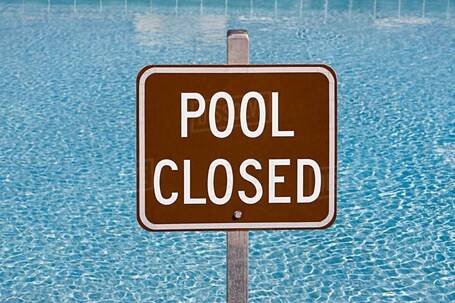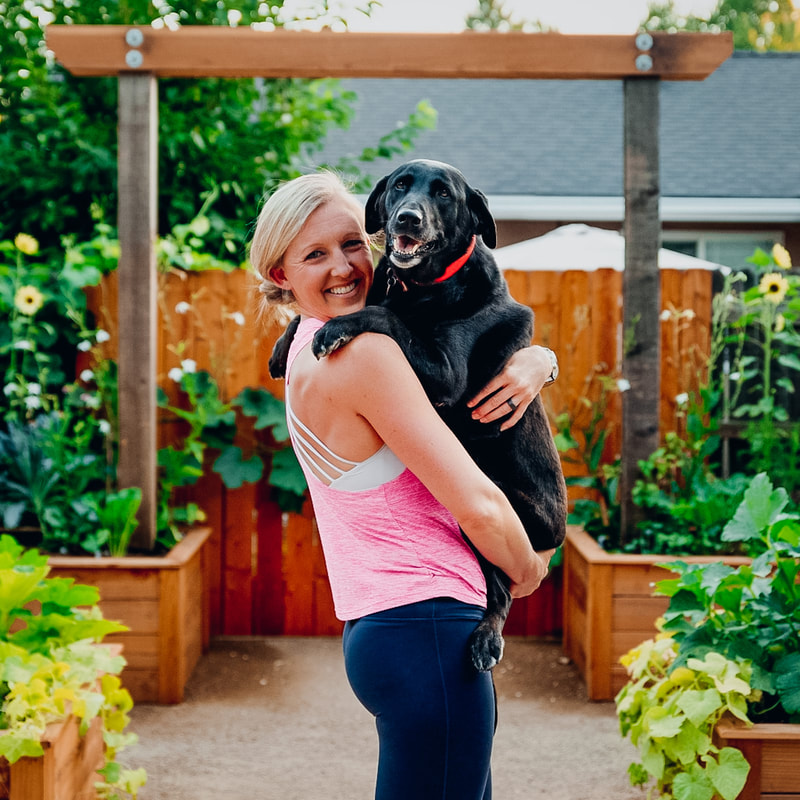|
Well...it finally happened. My first Ironman of 2020 has officially been postponed. In a way, I’m happy I finally just know. I sat around for a week watching others get the news that their races had been canceled or postponed, but for some reason, Ironman St. George (originally scheduled for May 2, 2020) remained on the schedule. Even my second race of the season, Ironman 70.3 Santa Rosa (originally scheduled for May 8, 2020 in which I was a swimmer on a relay team) had been canceled. I could tell this uncertainty about Ironman St. George was causing an unlying level of anxiety as every single time I saw I had a new email, I’d lose my breath for a split second wondering if it was the cancelation/postponement email. Now I can stop worrying about when or if that email is coming and just start planning for the next steps. Which brings me to one very important point about planning an annual training and nutrition plan. I brought it up in the very first blog of this series, but I’ll say it again here. Schedules will change. It’s part of life. That is why I always recommend you create an outline for your training and nutrition plan, and fill in the details as you get closer to each phase. This means that you should schedule out your macro and meso cycles, but wait on the details of the micro cycle until closer to those dates. If you don’t know what I’m talking about, revisit the first blog of this series which talks all about cycles HERE. The reason I suggest an athlete take this approach is this: if you had spent hours and hours planning out the finer details of each and every swim workout in January for the entire year, you would be spending another few hours modifying the whole thing! This Coronavirus pandemic was very unexpected and is greatly impacting our ability to train normally. Sure, some of us can go outside for a run and take our bike out for a ride but, unfortunately, there have been full pool closures in most areas around the world. That means, most of us triathletes aren’t swimming for the unforeseeable future. The same example can be seen with your nutrition plan. If you had all the details of each and every meal planned out for the coming weeks, they might all need to change as life throws you curveballs and you have to change up your training and therefore your nutrition too. Given our current circumstances, food right now is hit or miss! I don’t know how the grocery stores looked in your area, but shelves were empty in my town for a while. It’s just not as easy to find our “usuals”. Obviously this created a situation for meal creativity on the fly because half of what was on my grocery shopping list wasn’t available for purchase. My suggestion for creating these plans is to get a rough idea of your schedule, both from a macro and meso cycle. Leave the fine details of the micro cycle for daily or weekly planning instead. Trust me, it will save you a ton of time and headache down the road WHEN things change, because they will. What Do We Do Now? I know this may not fully comfort you but the good news is, we are in this together! All of us are being impacted, mentally, emotionally, and physically due to changes in our race schedule. Personally, 2 of my 4 races for 2020 have been postponed. That means that right smack in the middle of my race specific phase of training for Ironman St. George, I was thrusted right back into my...well...I didn’t really know where I was. With so much uncertainty about when the next race was going to be, I wasn’t sure if I was back in a build phase? Base phase? Pre-season? Who really knows!?! So instead of stressing too much about it, I temporarily put myself into a recovery phase, because that is what felt right to me at the time. Let’s be honest, like so many of you, I was feeling stress from all the uncertainty from COVID-19. Not just with my training, but for my friends and family, my business, my husband's business and my community. It seems like a pretty natural reaction for most people in this situation to say “screw it” and eat whatever they want, whenever they want it. And I certainly felt myself going down that path when all this first started. Luckily, I was able to refocus quickly! Maybe it helped not having my race canceled early on because an Ironman 6 weeks out can certainly keep you focused! But I think it also helped to know that the “screw it” mentality never worked well in the past and typically made me feel worse in the long run! So, instead of allowing myself to go down that path again, I focused on the vision board I created for myself at the beginning of the year. I spent hours looking at my goals and deciding that despite what was happening in this very moment, I still want all of those things. Sure, there are other perspectives I have now, and I certainly plan to add a few things to my goals for the year in response to this viral outbreak, but my goals for 2020 haven’t changed. And throwing 2 sheets to the wind and not taking care of myself is most certainly NOT part of my goals for 2020!!!! And you should feel the same way, too! This is not the time to give up. Instead, this is the time to refocus. I still have so much uncertainty about exactly what I’m doing with my training at the moment so I decided to adopt the recovery style of both training and nutrition, for the time being. There was a brief moment when I thought, ‘gosh, this blog series I’m in the middle of... it doesn't matter right now! It’s not important in comparison to what is happening in the world. I should put it on hold.’ But here is the thing, I really truly believe with all my heart that the absolute best thing we can be doing for ourselves right now is trying to 1. Keep things as normal as we possibly can and 2. Be setting ourselves up to be STRONGER and more resilient for when this is all over. So if you are like me, and you have no idea when you are going to race again, I highly advise that you keep on point with your training and nutrition in a way that sets you up to be AHEAD of the game when you have more certainty about your future. From a nutrition perspective, treating this like a recovery phase of training is EXACTLY what I recommend. So we’re forging ahead and we are going to wrap up this blog series with the details of EXACTLY that...your recovery phase! Recovery Phase Nutrition Plan As we have seen over the last few weeks, a well structured training plan will include progressions through various phases that elicit different and desired adaptations to prepare an athlete for an event. If you have been keeping up on the last 4 blog posts, hopefully you are starting to see that structuring a nutrition plan to shadow your training plan will also help you get better results. Today, we look at the finer details of a recovery phase of training. And since there are (in my opinion) two different types of recovery, I want to first address these from a training perspective. Recovery in training For most of us, we race more than 1x per year. That means that we most likely will not cycle through a pre-season, base, build, race specific and recovery phase of training in its entirety multiple times per year. Instead, we would likely start off the year in pre-season, then create a base, then cycle through the build, race specific, and recovery phases of training over and over again until our last race is completed. After that last race, the recovery phase will likely be longer, and hopefully the training will look MUCH different than the recovery week(s) you have mid-season. Mid-season Recovery Mid-season recovery for training should last approximately 1-3 weeks. During this time, it is likely that you will continue to practice your sports details. If you are a triathlete, you will likely continue to swim, bike and run. However, these will be done at much lower intensities and with much less volume than during the other phases of training. It is also very likely that you might throw in more recovery days, which can be complete days off, or active recovery days where you practice yoga or some other type of low level restorative sport. Postseason Recovery Postseason recovery for training looks much different than mid-season recovery. Here, it is suggested by most coaches to take a break from the monotony of the sport you have been repeating over and over again, day in and day out for months. Instead, it is usually encouraged to adopt a different sport. One that still keeps you fit, but gives you both a physical and mental break from your main sport. If you are a triathlete or a runner, maybe you adopt a cross country skiing routine. If you are a road cyclist, maybe you dust off the mountain bike and spend some time on the trails. Depending on how eager you are to get back to training, this is also a time for athletes to manage any imbalances that their sport can create. For many endurance athletes, this is dealing with the posterior chain. So this can also be a time to hit the gym and build back some strength in specific areas that may have been neglected over the past few months. However, remember that pre-season and base training phases call for strength training so you don’t have to go all out while you are in recovery. Recovery Nutrition
From a nutrition perspective, regardless of which recovery phase you are in (i.e., mid-season or postseason), I highly encourage athletes to also ‘take a break’ from a structured nutrition program. That doesn’t mean eat french fries and ice cream every day. Instead, I encourage athletes to follow an unstructured, high quality diet that follows the 80/20 rule. 80% of the time you continue to eat nutrient dense whole foods that are mostly plants. 20% of the time, you allow yourself to “indulge” in foods like french fries and ice cream. But high quality ones! Instead of driving through a fast food joint that uses hydrogenated oils that cause a whole bunch of inflammation in your body, why not purchase organic potatoes, and cook your own fries in an air fryer? There are great recipes you can follow online so use this time to explore and get creative in the kitchen!. The glory of making them from scratch at home is you get to control the ingredients. With less training on the schedule, you should have extra time to spend in the kitchen creating these fun treats for yourself without using ingredients that are harmful to your body. Personally, I love ice cream so I go ahead and make my own! Check out this recipe for a dairy free Almond Joy ice cream made without refined sugar! It’s too easy to not do! Regardless of what your “indulgence” is, the point is that you are enjoying them 20% of the time compared to the little to no intake during your other phases of training! Macronutrient Ratios During Recovery During a recovery phase, I don’t recommend following a specific macronutrient ratio. Remember, this phase is about taking a break!!! That means you shouldn’t be weighing and measuring food either. Your mind needs a break from so much structure, so take it and enjoy it! If this makes you nervous, don’t be. As long as you continue to move your body daily and eat mostly plants, moderate amounts of quality proteins and fats for 80% of the food you put into your body, the likelihood of your body composition changing too much is low. At the end of the day, recovery passes by quickly!! If you are in a mid-season recovery phase, you are looking at 1-3 weeks max before you jump back into either a build or race specific phase of training. If you are in the postseason, again, this phase will typically only last 3-8 weeks before most athletes jump back into some style of pre-season training. So rest assured that if you focus on the 80/20 approach, the amount of damage that can be done, if any at all, is negligible. Wrapping It All Up! So there you have it. All the details you need to create an annual nutrition plan to help you reach your health and performance goals! If you are just hopping in on the series, make sure you go back to read the rest of the articles which cover the other phases of training: Base Phase Build Phase Race Phase I know many of you are still grasping the reality that your race was cancelled or postponed. Go ahead and be sad, mad, frustrated! Feel those emotions without the guilt because you have been working hard and it sucks to have something ripped away from you! But then remember, that how you respond to these weird times is all in your power! You can choose to be upset and give up, or you can choose to be upset and then wipe away the tears and refocus! On the bright side, you have just been given a chance to go back and improve on yourself. And if you take that opportunity, you may end up doing even better than you expected to have done if your race had still been on! If you have questions or want some help putting a nutrition plan together, or if you are confused as to what you should be doing as a result of a race cancellation or postponement then do not hesitate to reach out to me! Creating training and nutrition plans is what I LOVE to do! So if you don’t love it, I’m here for you!
0 Comments
Leave a Reply. |
AuthorTiana Rockwell is a certified nutritional therapist, avid endurance athlete and dark chocolate lover. She believes that by eating REAL food, we can balance our body and reach optimal health and wellness! Archives
May 2022
Categories
All
|






 RSS Feed
RSS Feed